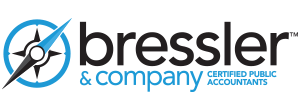Update: New Employee Requirements
On January 1, 2013, two new employee requirements were added, and on October 1, 2013 a third. As a business or government entity doing business in California, you are required to report certain information on employees to both the Internal Revenue Service and the California Employment Development Department (EDD). You are also required to provide all your new employees with certain information about their rights and benefits. The new requirements are noted in red.
Your Federal and California State Reporting Requirements —
- Form I-9, Employment Eligibility Verification – U.S. Citizenship and Immigration Services (USCIS, formerly known as the INS) requires employers to use this form to verify that every employee they hire is eligible to work in the United States. (You don’t have to file this form with the USCIS, but you must keep it in your files for three years and make it available for inspection by officials of Immigration and Customs Enforcement, known as ICE.) Note that these filled out forms should be kept in a separate I-9 folder for all employees — not in each employee’s personnel file. If you need further clarification, view or download the “Handbook for Employers” from the USCIS website.
- Report each new employee and rehired employee to the California State’s EDD New Employee Registry (NER) –All California employers must report all new or rehired employees who work in California to the New Employee Registry within twenty (20) days of their start-of-work date, which is the first day of work. Any employee that is rehired after a separation of at least sixty (60) consecutive days must also be reported within 20 days. Employers who report electronically must submit two files each month that are not less than 12 days and not more than 16 days apart. No report should be submitted if there are no new or rehired employees to report. You can submit this report either electronically using the e-Services for Business website, or submit a paper report DE 34.
Additional Federal and State Forms to be Filled Out by the Employee —
- IRS Form W-4, Withholding Allowance Certificate
On the W-4 form, employees tell you how many allowances they are claiming for federal tax purposes, so that you can withhold the correct amount of tax from their paychecks. (You don’t have to file the form with the IRS.) You should ask employees to fill out a new W-4 form each year if they want to change their allowances. - California State Withholding Form (DE 4) — This form is for California Personal Income Tax withholding only. It is beneficial for state tax computations if the employee has a “Head of Household” status which is not an option on the Federal W-4 Form to more accurately withhold taxes, and/or if the employee wants to withhold different amounts for Federal and State taxes. As a general rule, you should have them fill both forms out.
Employers must provide a copy of the following notices to each new employee when appropriate —
- (New) Notice of Health Care Options and Health Insurance Marketplace –Effective October 1, 2013, you must provide a “Notice of Health Care Options and Health Insurance Marketplace” to new employees within 14 days of their start date. If you do not have one set up yet, there are 2 model notices that you can use to customize with your information. A “Model for employers who offer a health plan,” and a “Model for employers who do not offer a health plan.” You must provide these notices to all new employees in writing if your business is covered by the Fair Labor Standards Act, even if you don’t have 50 or more employees. The model notices are also available in Spanish and MS Word format on the U.S. Department of Labor’s website. They are in the second section down, items 2 and 3. FAQ on Notice of Coverage Options, may answer many of your questions. Employers may use one of these models, as applicable, or a modified version. More compliance assistance information is available in a Technical Release issued by the US Department of Labor.
- (New) Notice to Employee (Labor Code Section 2810.50) — As of January 1, 2013, you are also required to provide all new employees with a “Notice to Employee.” This notice basically confirms all the employment details in writing — name of employer, name of employee, wage information, paydays, Workers’ Compensation insurance contact details, and includes a section for the employer and employee both to sign and date acknowledging receipt. If any changes are made to these details in the future, you must notify the employee in writing within seven (7) calendar days of the change.
- Notice to Employees (DE 35) — informs employees that their employer is required to send copies of Employee’s Withholding Allowance Certificate (Form W-4 [federal] or DE 4 [state]) to the Franchise Tax Board (FTB) if the certificate meets certain conditions. Please refer to “Marital Status, Withholding Allowances, and Exemptions (Form W-4 and DE 4)” in the California Personal Income Tax Withholding section of the California Employer’s Guide (DE 44) for further information.
Employers must provide a copy of the following pamphlets/brochures to each new employee explaining their benefit rights when appropriate:
- (New) Time of Hire Pamphlet — As of January 1, 2013, this pamphlet, or a similar one that has been approved by your administrative director, must be given to all newly hired employees in the State of California. You are allowed to add your logo and additional information on it as well as the logo and information from your claims administrator . The content of this pamphlet applies to all industrial injuries that occur on or after January 1, 2013, and covers the definition of “Workers’ Compensation,” the benefits of Workers’ Compensation, and includes information on what to do, who to contact, and by what date if they are injured on the job. You should include your Workers’ Compensation Insurance contact information in this pamphlet. It also gives your employees an opportunity to predesignate a specific personal physician, chiropractor, or acupuncturist rather than using the doctor/s designated by your claims administrator.
- EDD “Disability Insurance Provisions” Brochure (DE 2515) — This brochure outlines the California Disability Insurance Program.
- For Your Benefit: California’s Programs for the Unemployed (DE 2320) – Provides information on UI, DI, PFL, and Job Service benefits available to the employee.
- Paid Family Leave (DE 2511) – This brochure outlines the Paid Family Leave insurance program. Note: On September 24, 2013, Governor Brown signed SB 770 into law. It extends paid family leave benefits to more California families, and expands the definition of family to include siblings, grandparents, grandchildren and parents-in-law. A revised brochure should be forthcoming.
If you have any questions, your first call should be to us, your CPA, Bressler & Company — 924-1225. Give us a call anytime. We’re always happy to speak with you.
If you are interested in a comprehensive list of Federal and State posting requirements, please visit the Posting Requirements For California Employers page on the California Tax Service Center Web site.
The California Tax Service Center site noted above also has links to download these forms/brochures and contact information for ordering original copies.
Much of this information was taken from the CA.gov website page – Required Notices and Pamphlets.





